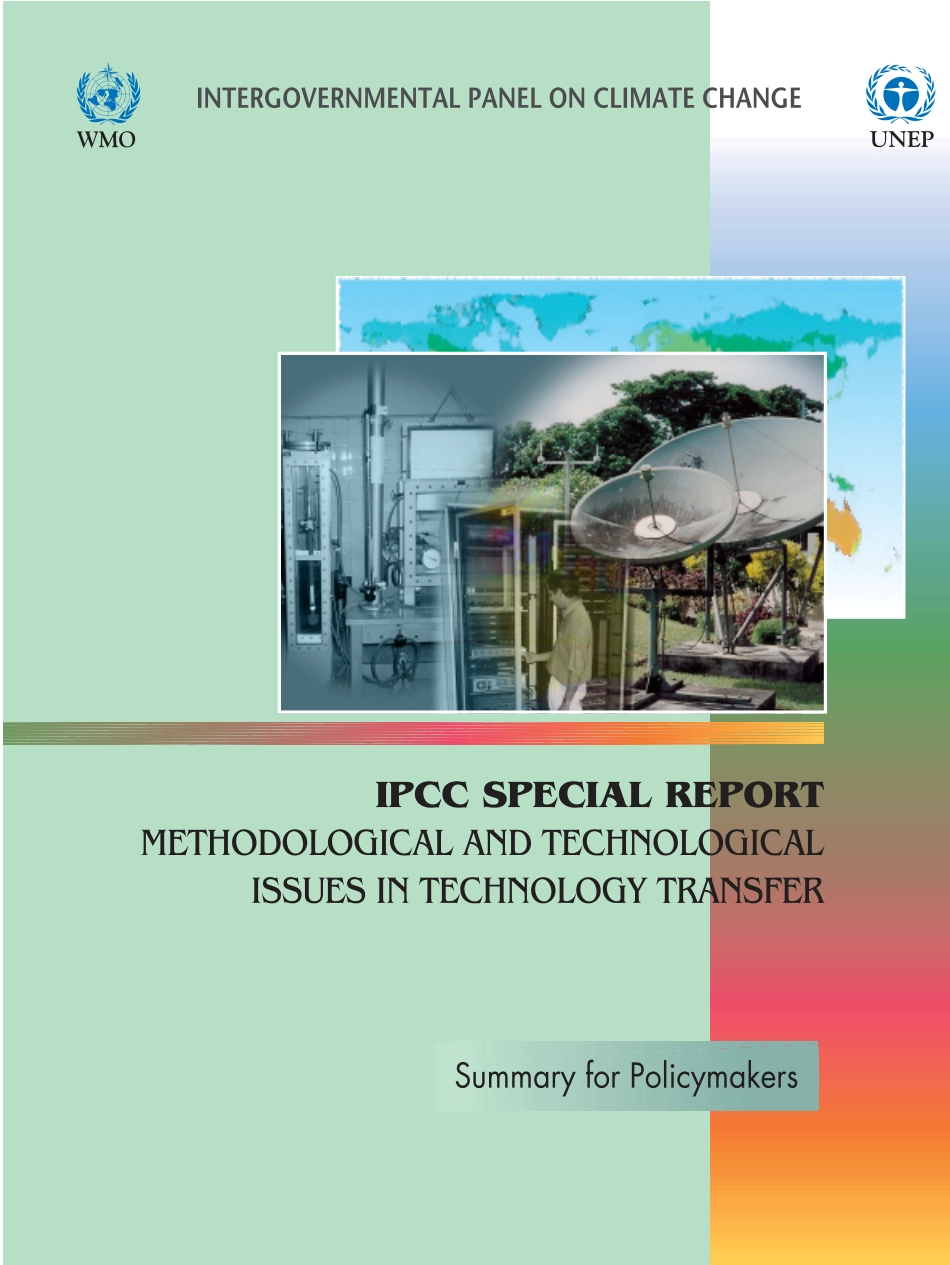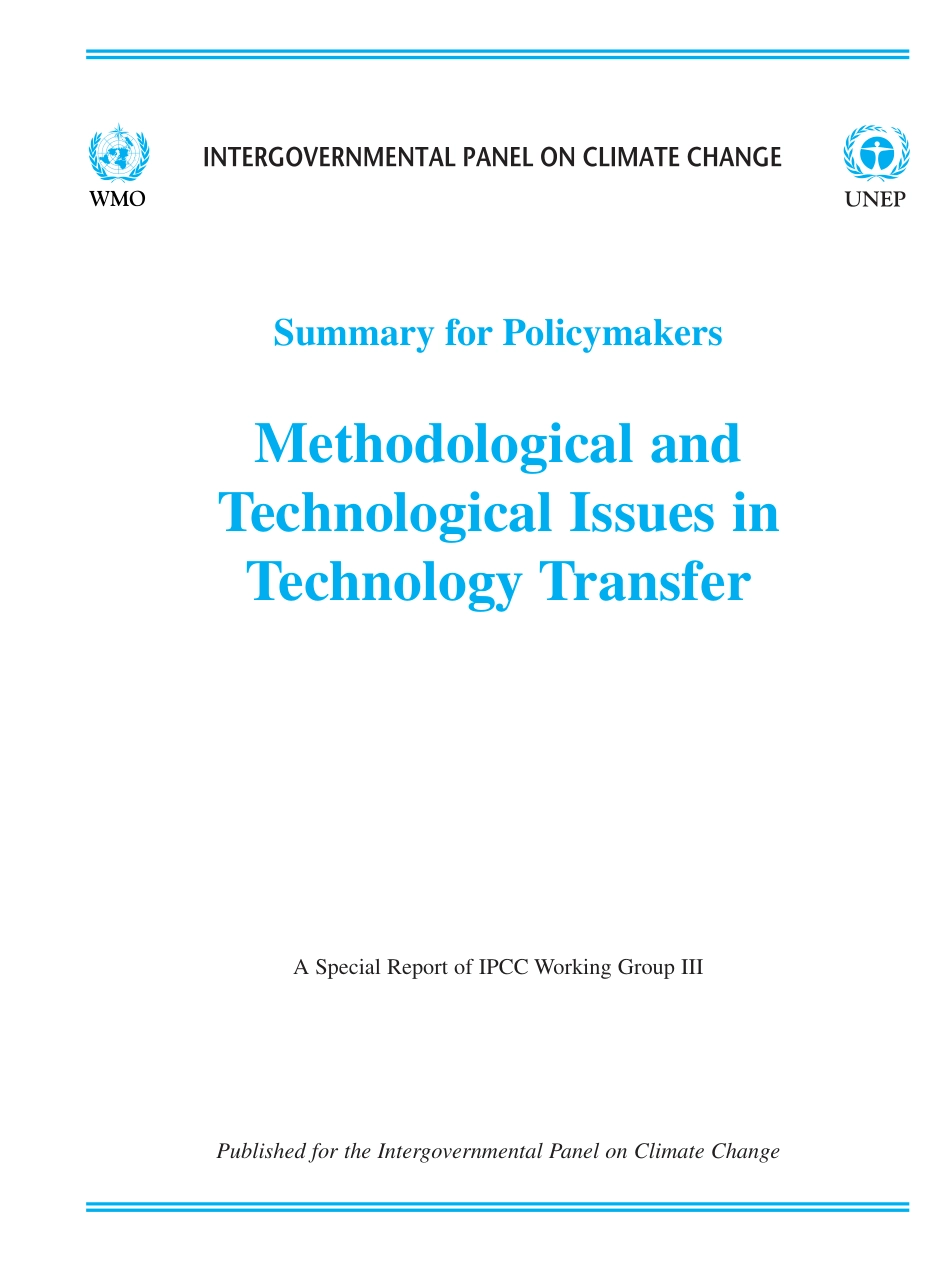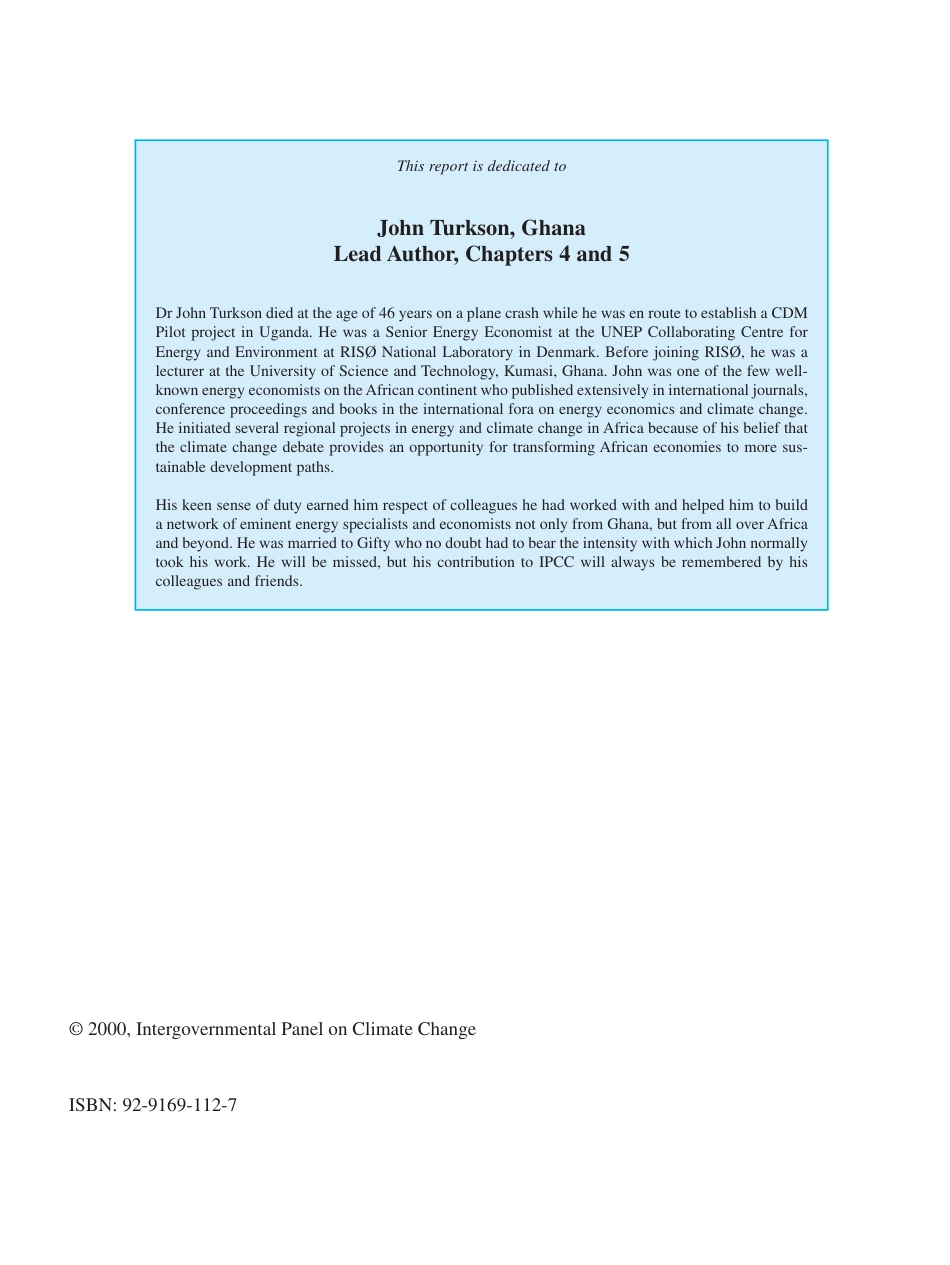Summary for PolicymakersMethodological andTechnological Issues in Technology TransferA Special Report of IPCC Working Group IIIPublished for the Intergovernmental Panel on Climate Change© 2000, Intergovernmental Panel on Climate ChangeISBN: 92-9169-112-7This report is dedicated toJohn Turkson, GhanaLead Author, Chapters 4 and 5Dr John Turkson died at the age of 46 years on a plane crash while he was en route to establish a CDMPilot project in Uganda. He was a Senior Energy Economist at the UNEP Collaborating Centre forEnergy and Environment at RISØ National Laboratory in Denmark. Before joining RISØ, he was a lecturer at the University of Science and Technology, Kumasi, Ghana. John was one of the few well-known energy economists on the African continent who published extensively in international journals,conference proceedings and books in the international fora on energy economics and climate change.He initiated several regional projects in energy and climate change in Africa because of his belief thatthe climate change debate provides an opportunity for transforming African economies to more sus-tainable development paths. His keen sense of duty earned him respect of colleagues he had worked with and helped him to builda network of eminent energy specialists and economists not only from Ghana, but from all over Africaand beyond. He was married to Gifty who no doubt had to bear the intensity with which John normallytook his work. He will be missed, but his contribution to IPCC will always be remembered by his colleagues and friends. ContentsForeword . . . . . . . . . . . . . . . . . . . . . . . . . . . . . . . . . . . . . . . . . . . . . . . . . . . . . . . . . . . ....



